D&D Monster Monday: Hydra
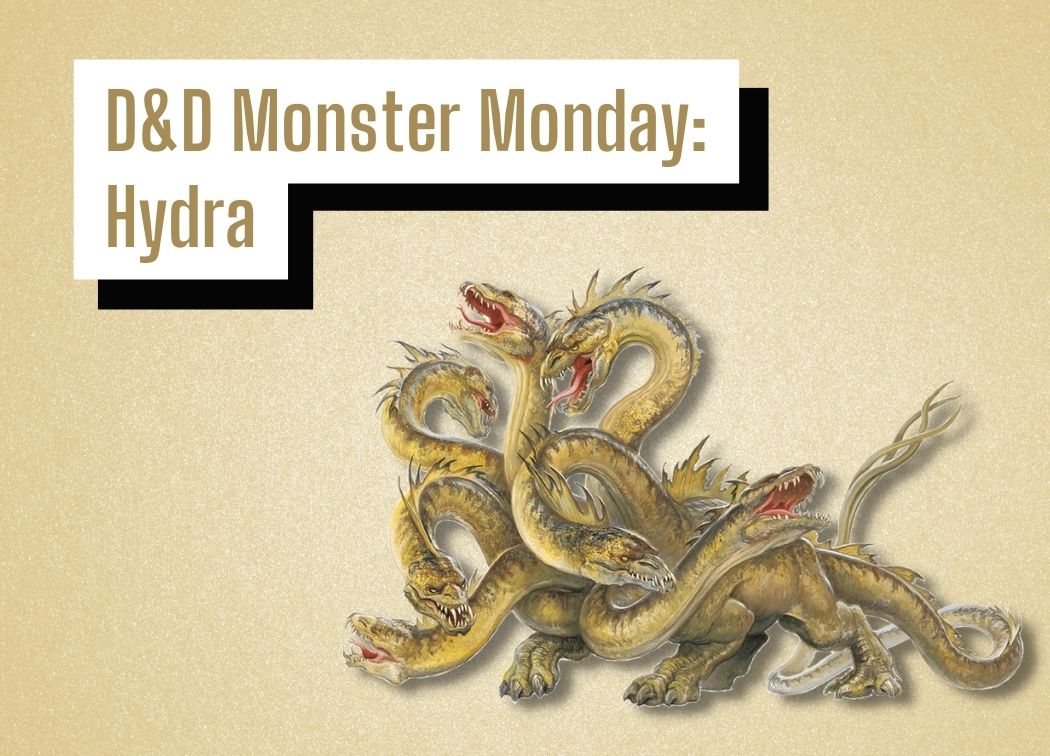
You’re making quick work of this vicious beast. Two heads down, three to go. You turn to cheer at your companions but are met by expressions of pure horror. Slowly, you turn back to face the hydra as it stares you down with four new heads baring a set of piercing sharp teeth. You may have underestimated your foe.
For this week’s Monster Monday we return to the Monster Manual and take a look at another classic creature from real-world mythology, the hydra. In my opinion, this is one of a few classic D&D creatures that have benefitted a ton from the more modern combat mechanics 5th edition has brought us.
A hydra is a big, amphibian, dragon-like, monstrosity that works well as an introduction to fighting dragons for players. They have a very unique regeneration mechanic and a bunch of other tricks up their sleeves that still make them interesting in their own right.
I was recently reminded how fun and powerful hydra are to play as and slay when I reviewed Beastmaster’s Daughter. It’s a solid boss monster thanks to its insane action economy and unique regeneration ability.
Hydra Lore
Like one of my first D&D Monster Monday creatures, the minotaur, the hydra has roots in Greek and Roman mythology. It’s one of the many creatures that Hercules/Heracles slew as one of his labors to atone for killing his own family after Hera caused him to go mad.
The Forgotten Realms lore for hydras is a bit of a different take on the hydra. Tiamat, the Queen of Evil Dragons slew Lernaea and in doing so sprayed her blood all over the multiverse. The hydras were born from these blood droplets.
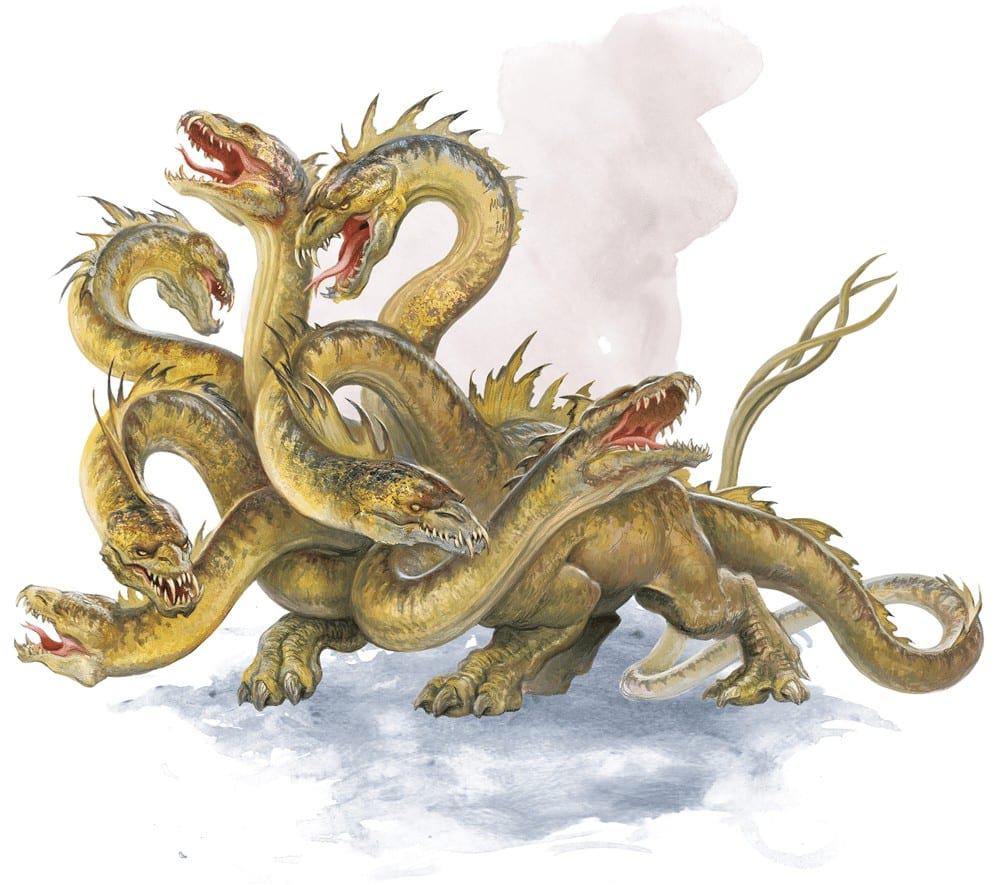
Hydras have an everlasting hunger. They are gluttonous monsters that will hunt their territory bare. It will then move onto the next spot to rend and consume the flesh of every living creature it can find.
They are amphibious creatures so hydras have a lot of different potential hunting grounds. They are tough creatures that can shrug off nasty weather with little effort. Only in cold climates will a hydra seek shelter from the elements.
A hydra is an amazing guard dog if you’re able to control them. While a hydra is asleep at least one of its heads will stay awake to look-out for potential prey that may cross its path. There isn’t much that a hydra would consider a potential predator, but should one cross its path they’ll have a hard time ambushing a hydra.
Hydra Stats and Abilities
Stats
- Size: Huge
- AC: 15 (natural armor)
- HP: 172 (15d12 + 75)
- Speed: 30 ft., swim 30 ft.
- STR: 20 (+5)
- DEX: 12 (+1)
- CON: 20 (+5)
- INT: 2 (-4)
- WIS: 10 (+0)
- CHA: 7 (-2)
It’s clear exactly what kind of creature the hydra is. Stats-wise they are a simple melee-centric character. They have a respectable AC for only having natural armor and a great health pool thanks to the bonuses from its huge size and +5 Constitution modifier.
The trade-off for a +5 Strength modifier is, as expected, pretty abysmal Intelligence, Charisma, and Wisdom. This is pretty common for animalistic creatures, they’ll trade their mental stats for better physical stats.
Typically this is worthwhile, but it always comes with the risk of the creature being easily crowd controlled by spells with Wisdom or Charisma saving throws.
The hydra’s Intelligence is particularly bad with a -4 modifier. Thankfully though, Intelligence isn’t used often by these types of creatures.
Resistances, Immunities, Saves, and Skills
- Skills: Perception +6
- Senses: darkvision 60 ft., passive Perception 16
- CR: 8 (3,900 XP)
There isn’t a lot to talk about in this section. As expected, hydras are extremely perceptive thanks to their multiple, ever-watching heads. A +6 to Perception makes them fantastic guards or deadly hunters. This checks out both mechanically and fits with the creature’s lore.
CR 8 is a solid designation for the hydra. Even at that, the hydra is probably closer to the higher end of CR 8 or low-end of CR 9. They are solid creatures from both an offensive and defensive perspective, though their statblock may not look that way this far into the analysis.
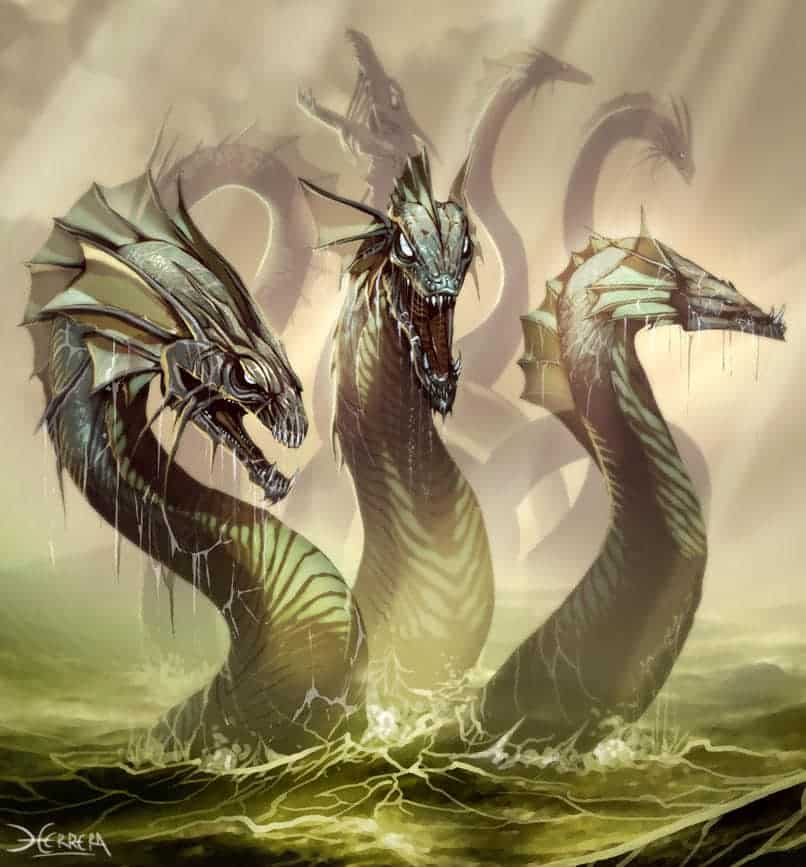
Abilities and Traits
Hold Breath. The hydra can hold its breath for 1 hour.
Multiple Heads. The hydra has five heads. While it has more than one head, the hydra has advantage on saving throws against being blinded, charmed, deafened, frightened, stunned, and knocked unconscious.
Whenever the hydra takes 25 or more damage in a single turn, one of its heads dies. If all of its heads die, the hydra dies.
At the end of its turn, it grows two heads for each of its heads that died since its last turn, unless it has taken fire damage since its last turn. The hydra regains 10 hit points for each head regrown in this way.
Reactive Heads. For each head the hydra has beyond one, it gets an extra reaction that can be used only for opportunity attacks.
Wakeful. While the hydra sleeps, at least one of its heads is awake.
As expected, the hydra has a lot of great traits and abilities to spice up its statblock. For starters, Hold Breath is a given considering this is a large amphibious creature. This could have some excellent mechanical opportunities outside of underwater encounters too. A hydra could lay in wait in a murky swamp for a potential target then spring out as soon as they get close to the shoreline.
Multiple Heads and Reactive Heads are two very awesome traits that seriously boost the combat ability of the hydra. First of all, hydras get advantage on a lot of the saving throws that its low Wisdom and Charisma would make it vulnerable to, effectively nullifying that weakness. This is still balanced though because it requires the hydra to have multiple heads.
A hydra’s heads can be lobbed off by burst damage, but they have a chance of healing up a good chunk of that damage and gaining 2 heads for each head lost the previous round. The catch, of course, is that the hydra must not have taken fire damage in the previous round for the regeneration to work.
These heads all have an extra reaction that can be used to make opportunity attacks. They can really control the battlefield with this potential threat considering that their Bite attack has a 10 ft. reach.
Wakeful is a trait that I mentioned previously in the lore section. It’s almost impossible to catch a hydra off-guard because of its ever-watching heads.
Actions
Multiattack. The hydra makes as many bite attacks as it has heads.
Bite. Melee Weapon Attack: +8 to hit, reach 10 ft., one target. Hit: 10 (1d10 + 5) piercing damage.
Hydras have a ridiculous amount of potential action economy. They can make a bite attack for each head they currently have. This is already solid since a hydra starts-off with 5 heads and can continue to gain two heads for each head that is cut off.
At an average of 10 damage per hit, a hydra can comfortably do at least 50 damage per round which is a sizeable chunk for a CR 8 creature. +8 to hit is nothing to scoff at and makes it likely that the hydra is going to make most of its attacks.
Its reach and huge size give the hydra the ability to reach even the back-line characters with a bit of maneuvering and some effort.
Hydra Strengths
Action Economy
Hydras get 1 Bite action per head as well as a unique reaction for each head to make an opportunity attack. They also get a standard reaction so they can essentially make 1 + Number of Heads opportunity attacks on a target that sloppily moves out of range of the hydra.
We also have to take into account that the hydra’s huge size and 10 ft. reach makes their radius for opportunity attacks pretty large. A creature is going to have to take a lot of opportunity attacks, or they’ll have to sacrifice their own action to disengage from the hydra. Either option is beneficial to the hydra.
A hydra basically gets more powerful the more it gets hit provided it’s not hit by an attack that deals fire damage. They’ll continuously grow more heads and gain some life the more they’re hit. It’s a double-edged sword, but it’s one that typically works in the hydra’s favor.
Add 10 damage per round for each head and you’ll have a creature that can deal some serious damage if the party isn’t able to finish it off quickly.
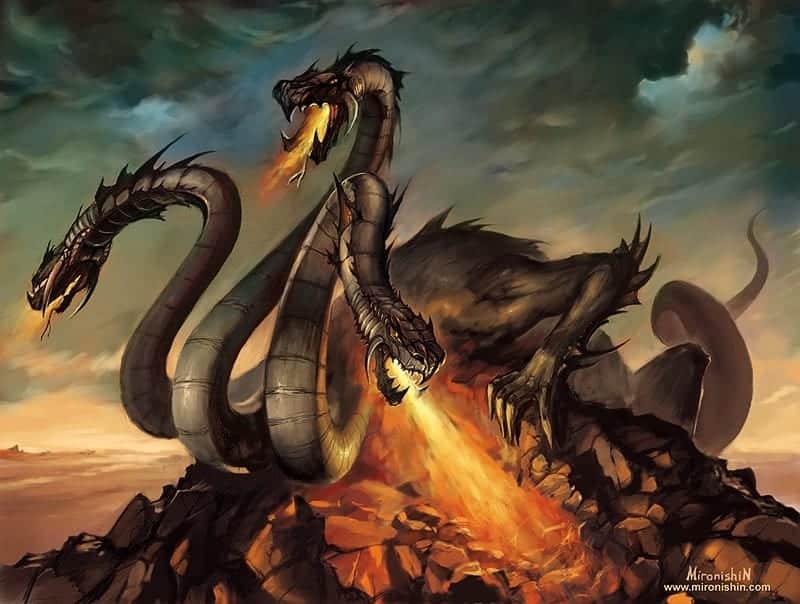
Regeneration and Survivability
The hydra’s Multiple Heads trait gives it a boatload of survivability. As long as the hydra has more than one head it will have advantage on saving throws against being blinded, charmed, deafened, frightened, stunned, and being knocked unconscious.
This is a huge boon for a hydra considering how bad their Intelligence, Wisdom, and Charisma modifiers are. Essentially, the trait removes what would be a huge weakness for the hydra, provided your hydra has at least 2 heads.
A hydra loses a head each time they take 25+ damage in a single turn. However, they regain 10 each time they regrow heads to replace the heads they lost in previous turns. While it’s still a net loss of HP, it’s enough to help keep the hydra afloat while it gains more offensive power.
As I mentioned before its AC and HP are both solid for a creature with natural armor. In fact, its HP is a bit above-average which gives the hydra a solid base to work with. This is important for the creature since it needs to last a few rounds to grow a few heads and unleash some havoc upon the party.
Hydra Weaknesses
Fire Damage
The catch to all this is if the enemy uses any attacks that deal fire damage. Even a simple Fire Bolt cantrip can grind the hydra’s Multiple Heads trait to a halt. It’s absolutely the creature’s Achilles heel.
If your hydra takes any fire damage in the previous round you do not get to utilize your Multiple Heads trait. This means no regeneration and no additional heads. This is an enormous loss to both the damage and survivability potential of a hydra.
Personally, it feels a little cheap to have such common damage type shut-down a creature. It’d feel a bit fairer if it took a minimum amount of fire damage in a round for the damage to negate the effects of Multiple Heads. That being said, this is probably a bit too crunchy for 5e so I understand why the condition is “unless it has taken fire damage since its last turn”.
Burst Damage
Hydras are susceptible to burst damage. A head will die each turn that a hydra takes 25 or more damage. A hydra can also die if all of its heads are dead, even if it still has HP remaining.
Since the hydra starts off with 5 heads, it’s not unreasonable to consider the fact that a hydra could be slain in 2 rounds if the party has 4-6 people capable of dealing at least 25 damage in a single turn.
Your hydra is really screwed if any of this burst damage includes fire damage. As I’ve mentioned many times, any fire damage stops the hydra’s regeneration. This means that not only will the hydra lose its heads due to burst damage, it will also be unable to recuperate from said losses.
If the party can manage to deal 125 damage (25 damage * 5 turns) with at least some of it being fire damage, they’ll be able to slay the hydra outright. They negate an additional ~50 hit points of health that the hydra has since they slew all 5 of its heads in quick succession.
How to Play a Hydra
Use Your Size
Maneuver yourself in such a way that the hydra can reach the majority of its enemies. Have it force itself into the center of the group so its multiple heads can lash out at the front-line and back-line characters with ease.
Its huge size means that it takes up 15 by 15 ft. on a grid. This is a huge amount of space in its own right. Tack on the hydra’s reach and you have an enormous radius to work with when making attacks. It’s going to be very difficult for a group to maneuver with such a massive amount of space being unsafe for them to move through.
Hydras work best in open spaces because of this. Any sort of small cave or area with nooks and crannies for medium creatures to hide in is going to be awful for the hydra. Sure, they can stick their heads into a hole, but only about 10 ft. inside of it.
Hydras will want to pick an ideal location and wait for their prey to come to them. The last thing they want is to be trapped in tight-quarters with creatures that can outmaneuver them.
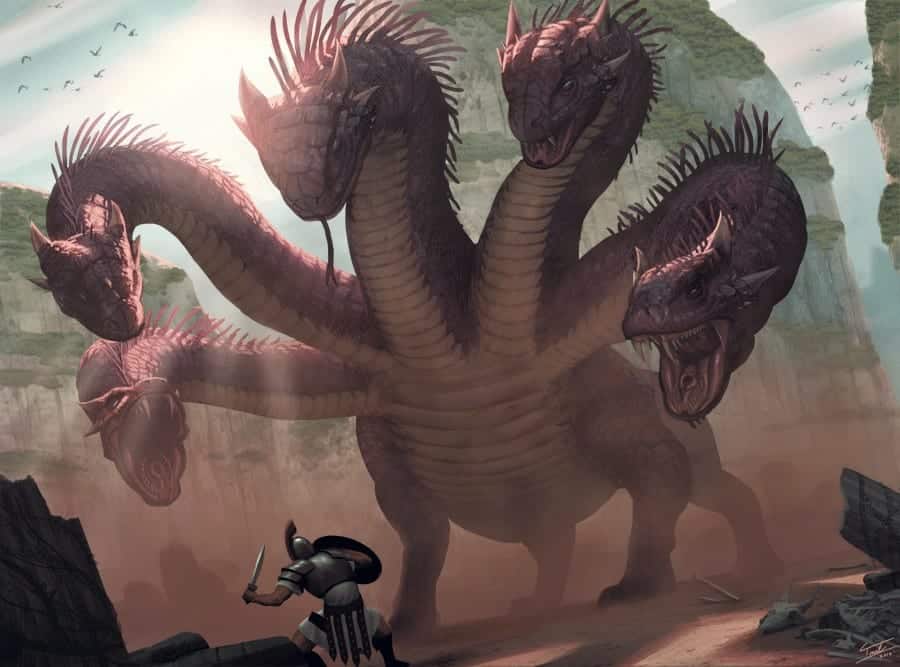
Chase After Your Prey
You’re a hunter that is deadly on both land and sea. Use this to your advantage when your prey runs away. Hydras have average movement speed and a solid amount of constitution, meaning that they have a great chance in catching their prey if a chase encounter breaks out during the party’s attempted retreat.
Ideally, the hydra should try and force its foes to dive into the water and swim away. This will force them to move through difficult terrain as the hydra dives in and swims with ease towards its dinner.
The hydra’s long necks give it enough reach to give it some extra leeway as it attempts to bite down on its fleeing prey. Anyone fleeing the hydra will have to take its reach into consideration unless they wish to deal with the opportunity attacks the hydra gets.
Countering Metagaming
Metagaming is always a tricky subject to approach. Seasoned D&D players are going to know that creatures like trolls and hydras will lose their regenerative abilities if they take fire damage. This can make these creatures much weaker than their statblocks imply if your players have faced one before.
While their characters wouldn’t know this information it’s still a bit much to ask your players to feign ignorance and just not use any attacks that deal fire damage. At this point, is it still metagaming if their main attack is Fire Bolt?
Instead, what if we reskinned or reflavored our hydra a bit so that its healing isn’t impacted by fire damage, but instead by some other type of damage? This way, your players won’t need to worry about metagaming if they actively avoid it, and you can catch players that do metagame off-guard when the hydra grows a new head despite taking fire damage.
If you choose to go this route I’d be sure to make it so that the new damage type is about as common as fire damage. Changing it to psychic or force damage would be pretty lame because of how uncommon these damage types are.
Conclusions
Hydras are unique, but very well balanced creatures. Their unique abilities and traits make them into a creature that gets more powerful the more damage they take. While this is very common in video game boss fights, it’s a hard concept to carry-over to TTRPGs like D&D. That being said, the hydra is this concept done right.
Hydras are also a very easy creature to scale up or down. Do you want your lower-level party to face one a bit early? Give it fewer heads and take away some health. Would a hydra make a great encounter for your high-level party? Give it a bit more health and a few more heads! The creature has a ton of scalability.
A hydra is an amazing creature to use as a boss encounter due to their enormous action economy. Any creature that can go shot-for-shot with the party is going to be a great choice, but the hydra is one of the few that don’t have to rely on legendary actions to give them a level playing field with the party.
That being said, there’s nothing to stop you from adding some legendary actions or lair actions to a hydra to make them an even more formidable foe! They’re fun creatures to play as a DM and slay as a player due to how unique they are to fight.
